NOTE: The rankings in this column have been updated since its original publish date in June.
Hall of Fame general manager Jim Finks once said, "A running back in the NFL is only as good as his blocking will let him be." This same rule applies to the passing game, as quarterbacks had an abysmal 29.1 Total QBR last season on plays in which they were under pass rush pressure.
Despite its importance, the fantasy football world has a significant gap in measuring the impact that blocking has on fantasy production.
That's about to change, as I have put together new blocking grading system designed to help fantasy owners identify the impact each team's offensive blockers are likely to have on fantasy prospects during the 2017 campaign.
The system uses a weighted bell curve structure largely revolving around multiple advanced metrics in both pass and run blocking.
For pass blocking, there is a significant emphasis for giving the quarterback a clean passing pocket, but notable value is also credited for preventing the quarterback from being sacked and/or hit by defenders. These elements are important in fantasy football because -- with help from the ESPN Stats & Info database -- quarterbacks are 60 percent more productive and pass catchers are 58 percent more productive on plays when the quarterback has a clean pocket.
A large portion of the run blocking grade is based on my good blocking rate (GBR) metric, which measures how often a ball carrier is given good run blocking, roughly defined as the offense not allowing the defense to disrupt a rush attempt. GBR is important because good blocking carries are usually worth five times as many fantasy points as bad blocking carries.
The system also awards substantial value for personnel stability. NFL teams are projected to return 75.7 percent of their starting offensive line snaps from last year, and that number doesn't include 2016 starters from who have been shifted to backup roles on their same clubs. This shows NFL teams do place a heavy emphasis on keeping offensive lines together and illustrates why the personnel stability metric is important.
Another grade element is teams with stable measurements in multiple metrics will rate higher in that area than teams whose overall metric grades are equivalent but who reach that level with a more volatile set of metrics.
Pass blocking accounts for 37.5 percent of the overall grade, run blocking 27.5 percent, stability/consistency 20 percent and schedule 15 percent. The system uses an A-F grade scale similar to the one we all remember from our school days.
Now that we have the preliminaries out of the way, let's take a look at how each team's blockers are slated to fare during the 2017 season.
Overall grade: A
Pass blocking: A
Run blocking: A-
Stability/consistency: A
Schedule: A-
The Steelers are the only team in this analysis to have "A" grades in all four categories. The elite run blocking grade adds to Le'Veon Bell's value, but it also makes the winner of Pittsburgh's backup running back job (either James Conner or Fitzgerald Toussaint) a high percentage bench stash or handcuff. The upper-tier pass blocking should help alleviate concerns about Ben Roethlisberger making it through the season injury-free.
Overall grade: A-
Pass blocking: A-
Run blocking: B+
Stability/consistency: A-
Schedule: A
The Bears ranked seventh last season in ESPN Stats & Information's pass protection metric (PPM) that measures how often an offense controls the line of scrimmage on a dropback (50.4 percent). This helped Chicago rank eighth in sacks per dropback (4.7 percent). The Bears' ability to create huge gaps in defenses led to Jordan Howard ranking tied for third in my good blocking yards per attempt (GBYPA) metric (10.3). Chicago returns four starters from last year's offensive line and has an "A" schedule grade, so a repeat of these top-notch metrics is highly probable.
Overall grade: A-
Pass blocking: A-
Run blocking: A
Stability/consistency: B
Schedule: C
As might be expected for a Drew Brees team, the Saints had the best pass pressure rating allowed in the league (17.4 percent). What is surprising is that New Orleans also ranked tied for the best run blocking grade in part due to placing fourth in GBR (42.8 percent). If center Max Unger returns from his offseason foot surgery in time for Week 1 (as is currently projected), the Saints should be able to repeat this upper-tier performance.
Overall grade: B+
Pass blocking: B+
Run blocking: A-
Stability/consistency: A-
Schedule: B+
Tennessee made the jump from the worst GBR in 2015 (30.8 percent) to the second best GBR in 2016 (43.7 percent). The Titans were nearly as good in pass blocking, as they ranked fifth in PPM (50.9 percent). They return all five offensive line starters this season so DeMarco Murray should get plenty of assistance in repeating last year's superb fantasy production. The caveat is the Titans ranked 23rd in dropback hit percentage (how often their quarterback was hit by the defense on a dropback) so Marcus Mariota could have more durability problems if this issue isn't resolved.
Overall grade: B
Pass blocking: A
Run blocking: C+
Stability/consistency: B+
Schedule: D-
Washington placed tied for the best overall pass blocking grade due to ranking first in PPM (52.0 percent), fourth in sack rate (3.6 percent) and tied for sixth in dropback hit rate (7.8 percent). Add five returning offensive line starters to the mix and it should allow Kirk Cousins, Terrelle Pryor Sr. and Jordan Reed to continue to produce superb fantasy numbers despite the D-minus schedule grade.
Overall grade: B
Pass blocking: B+
Run blocking: A-
Stability/consistency: B
Schedule: D-
The Eagles ranked third in GBR last year (43.2 percent) despite having road-grading offensive tackle Lane Johnson out of the lineup for 10 games. His return should help the Eagles keep their run-blocking prowess at or near an elite level. Johnson could also improve the already strong pass blocking, as Philadelphia ranked seventh in pocket time allowed on vertical passes (2.7 seconds on aerials thrown 11 or more yards downfield). This trait should give Alshon Jeffery and Torrey Smith plenty of time to get open downfield.
Overall grade: B
Pass blocking: B
Run blocking: B
Stability/consistency: B+
Schedule: C
The Texans' blocking wall wasn't dominant in any area, but they had only three metrics with a grade rating of lower than "B" and only one grade under the "C" level. This elite consistency should provide Houston's running backs with plenty of blocking assistance. It also could help Tom Savage or Deshaun Watson get DeAndre Hopkins much closer to his formerly superb vertical receiving production level.
Overall grade: B
Pass blocking: A-
Run blocking: B-
Stability/consistency: B
Schedule: D-
Oakland had the best sack rate allowed in the league last year (2.9 percent) and ranked fourth in PPM (51.0 percent), so consider Derek Carr's broken ankle an anomaly unlikely to recur. The Raiders do bring back all five offensive line starters, but mid-tier run blocking numbers (39.2 GBR, ranked 14th), a D-minus grade in screen blocking and a D-minus schedule grade cap this group's overall rating.
Overall grade: B
Pass blocking: B-
Run blocking: A
Stability/consistency: B
Schedule: D
The Falcons had a volatile set of pass blocking metrics, as they ranked 24th in both dropback pass rush pressure allowed (29.8 percent) and sack rate allowed (6.3 percent), yet still had the third highest pocket time on vertical throws (2.8 seconds). A 41.7 percent GBR (ranked eighth) and 2.9-yard rushing average before first defensive contact (ranked third) illustrates their ground game expertise. The return of four starters should keep Atlanta's blocking at or near this level in 2017.
Overall grade: B
Pass blocking: B
Run blocking: C
Stability/consistency: B+
Schedule: B+
The return of offensive line coach Dante Scarnecchia helped solidify the Patriots blocking and helped New England place tied for ninth in dropback hit rate (9.1 percent). Returning all five offensive line starters should help Tom Brady get the most out of new home run threat Brandin Cooks, but the mediocre run blocking grade suggests Patriots running backs will still be a fantasy owner's nightmare.
Overall grade: B-
Pass blocking: C
Run blocking: B+
Stability/consistency: B-
Schedule: B+
The dink-and-dunk nature of the Chiefs' passing game usually leads to good pass blocking, but Kansas City's No. 25 ranking in PPM (46.5 percent) and No. 31 mark in pocket time on vertical throws (2.4 seconds) held their grade down in this area. A 40.4 percent GBR (ranked ninth) and four returning starting offensive linemen should keep Kansas City fantasy running back values in good shape.
Overall grade: B-
Pass blocking: D+
Run blocking: B-
Stability/consistency: B+
Schedule: A
Cincinnati's "D" or lower grades in sack rate, pass protection and time in pocket on vertical passes means it could be it difficult for the Bengals to get the most out of A.J. Green, John Ross or Andy Dalton. One potential positive trait is the No. 11 ranking in GBR (39.9 percent) could mitigate downside for drafting Jeremy Hill or Joe Mixon. The "A" schedule grade should also prove beneficial.
 13. Dallas Cowboys
13. Dallas Cowboys
Overall grade: B-
Pass blocking: B
Run blocking: A-
Stability/consistency: C-
Schedule: D-
This grade may seem like a big surprise, but consider how Dallas got here. Their run blocking is as strong as advertised, but their pass blocking wasn't at an equivalent level. The Cowboys did place sixth in PPM (50.5 percent), but they also ranked 25th in both pressure rate allowed (30.2 percent) and dropback hit rate (13.3 percent). Those erratic metrics, when combined with Dallas ranking 24th in percentage of returning primary starting offensive linemen snaps from last season (61.3 percent) and the D-minus schedule grade, led to this group falling just outside of the top 10.
Overall grade: B-
Pass blocking: B-
Run blocking: C-
Stability/consistency: B+
Schedule: A-
Prospective Leonard Fournette fantasy owners won't be happy seeing the C-minus run grade brought about in part by a No. 21 rank in GBR (36.3 percent). What they will like is four returning offensive line starters, an A-minus schedule, an A-minus grade in metric consistency and second-round draft pick Cam Robinson helping raise the run blocking grade in 2017.
 15. New York Giants
15. New York Giants
Overall grade: B-
Pass blocking: B+
Run blocking: D+
Stability/consistency: C+
Schedule: D
The Giants blockers took a lot of heat from pundits last season, but let's not forget that Big Blue had the lowest dropback hit percentage (5.1), ranked fourth in pass pressure rate allowed (20.7 percent) and was third in sack rate allowed (3.5). The D-plus run blocking grade is a hindrance for Giants running backs, while New York's No. 28 ranking in pocket time on vertical passes (2.5 seconds) could cap Eli Manning, Odell Beckham and Brandon Marshall's fantasy projections.
Overall grade: C+
Pass blocking: B+
Run blocking: D-
Stability/consistency: D+
Schedule: A-
The combination of a D-minus grade in run blocking and a B-plus grade in pass blocking were major factors in Aaron Rodgers setting a career high in single-season pass attempts (610). That wide grade variance led to the D-plus in stability/consistency despite Green Bay returning four starters and adding guard Jahri Evans in free agency. The Packers had the best screen pass blocking grade in the league last year, so look for Green Bay to continue to use that element quite heavily to augment their rushing attack.
 17. Cleveland Browns
17. Cleveland Browns
Overall grade: C+
Pass blocking: D-
Run blocking: A
Stability/consistency: F
Schedule: A
One of the most surprising metrics from last season was Cleveland ranking sixth in GBR (42.0 percent). Before using that as a reason to draft Isaiah Crowell or Duke Johnson as upside picks, fantasy owners should note that the Browns rank 30th in percentage of returning starting offensive linemen snaps (42.3 percent) and were one of only two teams to earn an "F" grade in stability/consistency. The offseason offensive line additions might result in another "A" run blocking grade in Hue Jackson's power rushing system and the "A" schedule grad won't hurt, but it could also take some time for the offensive line to gel.
 18. Baltimore Ravens
18. Baltimore Ravens
Overall grade: C+
Pass blocking: B-
Run blocking: C
Stability/consistency: F
Schedule: A
Baltimore placed seventh in sack rate last year (4.6 percent), but also ranked 27th in pocket time on vertical passes (2.5 seconds) and tied for 23rd in PPM (47.1 percent). This type of inconsistency is why the Ravens overhauled their offensive line, as no team returns a lower percentage of their starting offensive linemen snaps (40.1 percent). If the offensive line personnel plan works and the "A" schedule grade helps matters, look for Baltimore to drop Joe Flacco's pass volume by at least 100 attempts and convert those into carries for Terrance West and Danny Woodhead.
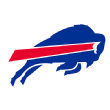 19. Buffalo Bills
19. Buffalo Bills
Overall grade: C+
Pass blocking: D+
Run blocking: A-
Stability/consistency: D-
Schedule: B-
This was the most hit-miss blocking wall in the league last year. The Bills placed first in pocket time on vertical passes (2.9 seconds), but had the worst dropback hit rate (24.6 percent). They were tied for the worst screen pass blocking grade (F), yet had the fifth highest GBR (42.1 percent). This maddening inconsistency is why the Bills had a D-minus grade in stability/consistency despite returning four starters. Fantasy owners can probably rely on the run blocking for LeSean McCoy, but otherwise should consider this blocking wall untrustworthy.
Overall grade: C
Pass blocking: D-
Run blocking: C+
Stability/consistency: B+
Schedule: B-
Carolina's No. 30 ranking in dropback hit percentage (18.8) helped lead to the D-minus pass blocking grade and provides impetus for the Panthers to reduce Cam Newton's career high in pass attempts per game from last season (34.0). The C-plus run blocking grade could hinder Christian McCaffrey's production, but returning four offensive line starters and adding a powerful draft prospect in tackle Taylor Moton could push the run blocking to greater heights in 2017.
Overall grade: C
Pass blocking: C+
Run blocking: D-
Stability/consistency: D+
Schedule: A
A revolving door of offensive linemen resulted in Minnesota ranking next to last in yards per rush before first defensive contact (1.7). The Vikings return only two offensive line starters and 41.0 percent of their offensive line starter snaps (ranked 31st), which is a primary reason why they have a D-plus stability/consistency grade. The offseason free agency and draft acquisitions on the offensive line should result in somewhat improved run blocking, so fantasy owners shouldn't go overboard in dropping Dalvin Cook's fantasy value.
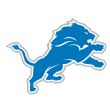 22. Detroit Lions
22. Detroit Lions
Overall grade: C
Pass blocking: C+
Run blocking: D-
Stability/consistency: C+
Schedule: B-
The Lions do a solid job of keeping Matthew Stafford protected, as they ranked 12th in pass pressure allowed (25.4 percent) and 14th in dropback hit rate (10.3 percent). Detroit has terrible run blocking outside of its "B" grade in screen pass blocking, as the Lions ranked 27th in GBR (34.1 percent). They return only 57.4 percent of their primary starting offensive linemen snaps (ranked 26th), but the additions of T.J. Lang and Rick Wagner to the right side of their line could help the Lions improve on last year's performance.
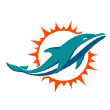 23. Miami Dolphins
23. Miami Dolphins
Overall grade: C
Pass blocking: C
Run blocking: D-
Stability/consistency: B+
Schedule: C-
The Dolphins' run blocking was bad across the board, as Miami ranked 28th in GBR (34.0 percent) and was one of only three teams to earn an "F" grade in screen pass blocking. A No. 24 ranking in dropback hit percentage (13.1) means Ryan Tannehill could be an injury risk. This group could see significant improvement if center Mike Pouncey returns to full-time status after registering only 287 snaps last season.
Overall grade: C
Pass blocking: D+
Run blocking: C+
Stability/consistency: D+
Schedule: C
The Bruce Arians vertical passing system puts a lot of pressure on its offensive linemen and this group wasn't up to the task. The Cardinals placed tied for 29th in PPM (45.4 percent) and tied for 23rd in pocket time on vertical passes (2.5). Arizona returns four starting offensive linemen, but two of those players will be moving to different positions. A No. 24 rank in GBR (34.5 percent) didn't keep David Johnson from being an elite fantasy running back last year, but this group gives him a lower production ceiling than he would have with a stronger offensive line.
Overall grade: C-
Pass blocking: D-
Run blocking: C+
Stability/consistency: B+
Schedule: F
The Chip Kelly pass blocking system fell apart last year, as the 49ers ranked next to last in dropback hit rate (21.0 percent) and 29th in sack rate (8.0 percent). On a positive note, San Francisco did place 14th in PPM (48.4 percent). The 49ers return 82 percent of their primary offensive linemen starter snaps from last year, so Kyle Shanahan will have a lot of building blocks to try to implement the system that worked so well in Atlanta last season, but the "F" schedule grade will hinder every 49ers fantasy prospect.
Overall grade: C-
Pass blocking: C+
Run blocking: D-
Stability/consistency: D-
Schedule: B+
One of the most amazing feats in fantasy football last year was Melvin Gordon racking up 250.6 fantasy points despite getting good blocking on only 28.1 percent of his carries (next to last among running backs with 100 or more carries). That indicates Gordon can be an impact player regardless of whether or not new head coach Anthony Lynn's wholesale offensive line changes (including replacing three offensive line starters) have a positive impact this season.
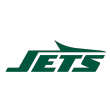 27. New York Jets
27. New York Jets
Overall grade: D+
Pass blocking: C+
Run blocking: C-
Stability/consistency: D
Schedule: F
The Jets have some solid pass protection metrics, but no team in the league gave its quarterbacks less pocket time on vertical passes (2.4 seconds). That hinders the limited fantasy wide receiver prospects that remain on the Jets' roster. The run blocking is apt to be just as mediocre, as New York ranked 23rd in GBR (34.5 percent). The Jets' blocking inconsistencies are so bad that they have the fifth-lowest stability/consistency rate despite returning four offensive line starters.
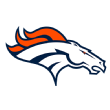 28. Denver Broncos
28. Denver Broncos
Overall grade: D+
Pass blocking: D
Run blocking: F
Stability/consistency: C
Schedule: A-
The uncertainty at quarterback will make many fantasy owners think twice before drafting a Broncos pass catcher and the nearly ubiquitous subpar pass blocking metrics will add to that hesitation. Denver's No. 31 rank in GBR (33.2 percent) may be part of why they are making a change from a zone blocking scheme to a gap blocking scheme. That latter system may not be the best fit for Denver's running backs, so fantasy owners may want to think twice about investment costs for any Broncos player.
Overall grade: D
Pass blocking: D
Run blocking: D
Stability/consistency: B-
Schedule: F
Fantasy owners considering drafting Andrew Luck should note that the Colts ranked 29th in pass pressure rate allowed (34.6 percent), 28th in dropback hit percentage (16.2) and tied for 26th in sack rate (6.6 percent). This group was also one of only three teams to earn an "F" grade in screen pass blocking and placed 20th in GBR (36.7 percent). The Colts do return all five offensive line starters, but a lack of quality blocking and a brutal schedule cap the value of that metric.
 30. Los Angeles Rams
30. Los Angeles Rams
Overall grade: D-
Pass blocking: D-
Run blocking: D-
Stability/consistency: B
Schedule: F
D-minus grades in pass and run blocking led the Rams to replace three starting offensive linemen and return only 42.6 percent of their starting offensive linemen snaps (ranked 28th). The blocking uncertainty does hinder Todd Gurley's fantasy value, but the addition of offensive line coach Aaron Kromer and tackle Andrew Whitworth could help the Rams take a forward step in blocking this year.
Overall grade: D-
Pass blocking: D-
Run blocking: D-
Stability/consistency: C
Schedule: D+
Tampa Bay has been rightfully lauded for adding DeSean Jackson and O.J. Howard to this offense, but maybe they should have done more to help the offensive line. The Buccaneers ranked tied for 29th in both PPM (45.4 percent) and pressure rate allowed (34.6 percent). Tampa Bay also placed last in yards per rush before first defensive contact (1.7) and 29th in GBR (33.7 percent). All of those metrics hinder the value of returning four offensive line starters and add significant risk to fantasy owners looking to this team for upside plays.
 32. Seattle Seahawks
32. Seattle Seahawks
Overall grade: D-
Pass blocking: F
Run blocking: C
Stability/consistency: D
Schedule: D-
The Seahawks were the only team to land an "F" rating in pass blocking, as they ranked dead last in both pass pressure rate (36.3 percent) and PPM (41.3 percent). This led to Seattle ranking 30th in pocket time on vertical passes (2.4 seconds). Their run blocking wasn't that much better, as the Seahawks placed 26th in GBR (34.2 percent). The one positive note is Seattle did get an "A" grade in screen pass blocking. The atrocious pass blocking performance has led to Seattle moving back to their run-heavy ways, so consider Russell Wilson, Doug Baldwin and Jimmy Graham to have relatively low play volume ceilings this year.

 1.
1. 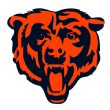 2.
2.  3.
3. 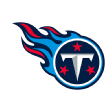 4.
4.  5.
5.  6.
6.  7.
7. 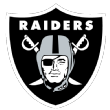 8.
8.  9.
9. 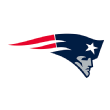 10.
10. 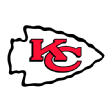 11.
11.  12.
12. 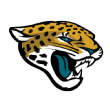 14.
14. 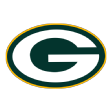 16.
16. 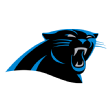 20.
20.  21.
21. 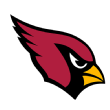 24.
24.  25.
25. 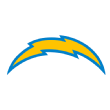 26.
26. 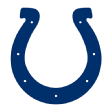 29.
29.  31.
31.